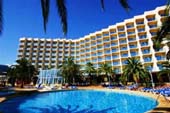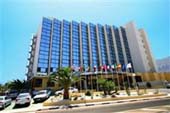Though it may seem a world away, the beautiful island of Mallorca is easily reachable from the Costa Blanca region and well worth a visit if you have a few days to spare. A short flight from Alicante airport or a ferry ride from the resort of Denia, will see you on the holiday island in no time.
Mallorca (normally called Majorca in the UK) is the biggest of the Spanish Balearic Islands, the other main islands are Ibiza, Menorca, Formentera and Cabrera, Mallorca itself is often likened to a continent rather than a small island, due to is rich and diverse landscape, which varies from the alpine like mountains of the Serra Tramuntana and the Serra de Levant to the flat fertile plains of central Mallorca. The island is also rich in flora and fauna and its natural parks such as the wetlands of S’Albufera in northern Mallorca, provide important protection for hundreds of bird and animal species.
Mallorca was one of the pioneers in mass tourism during the 1960’s and 1970’s and many of its popular resorts became over developed, but don’t let that put you off the place, get away from the built for tourism resorts (mostly gathered on the south coast), and you will find some charming little towns and villages, which remain much as they have for hundreds of years. Though almost nowhere is Mallorca is totally untouched by tourism, and most places rely on it, in one way or another, there is plenty to see that has not been spoiled by it.
Mallorca was first inhabited in around 5000 BC and its first organised culture was known as the Talaiotic Culture which built settlements in Capocorb Vell and Artà in 1000 BC. The Talaiots left their mark in the form of great stone towers which can still be seen today (the neighbouring island of Menorca is particularly rich in these structures). The Romans conquered Mallorca in 123 BC and called it Balearis Major, they built their capital at Pollentia (Alcudia) and introduced vineyards and olives, though it remained an outpost of the Roman Empire and less important than the Spanish mainland. After the collapse of the Roman Empire, the Vandals arrived on Mallorca, persecuting the Christian population, though their control was relatively brief and they were ousted by the Byzantines who restored Christianity and order to the island, under Byzantine control Mallorca became a province of Sardinia.
The next major year in Mallorca’s history was 902 AD when the Moors invaded, incorporating the island into the Caliphate of Córdoba, the Arabs called it Medina Mayurqa and set to work improving the irrigation of the island with their advanced techniques, introducing new crops such as oranges and almonds.
Mallorca was re-conquered for the Christians in 1229 by King Jaime I of Aragon, his son Jaime II was later to become the 1st King of Mallorca.
Mallorca suffered numerous pirate attacks throughout the 16th to 18th centuries and a number of watchtowers were built around to coast to warn the inhabitants of these attacks.
In late 1936 during the Spanish Civil War, Mallorca was attacked by Republican troops, the attack was repulsed and the island remained in Nationalist hands throughout the war (1936-39).
Mass tourism arrived in the 1960’s with the opening of the Son Sant Joan Airport and Mallorca catered for this modern invasion by developing its southern coastline, in 1983 the Balearic Islands became an autonomous region of Spain, with Palma de Mallorca as its capital.
Mallorca Map.


